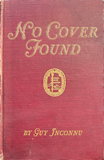search for books and compare prices

Contributions to the Theory of Natural Selection
Price
Store
Arrives
Preparing
Shipping
Jump quickly to results on these stores:
The price is the lowest for any condition, which may be new or used; other conditions may also be available.
Bibliographic Detail
Publisher
Ams Pr Inc
Publication date
June 1, 1970
Binding
Hardcover
Book category
Adult Non-Fiction
ISBN-13
9780404081812
ISBN-10
0404081819
Dimensions
1 by 5.50 by 7.25 in.
Availability§
Publisher Out of Stock
Original list price
$60.50
§As reported by publisher
Summaries and Reviews
Amazon.com description: Product Description: This historic book may have numerous typos and missing text. Purchasers can usually download a free scanned copy of the original book (without typos) from the publisher. Not indexed. Not illustrated. 1870 edition. Excerpt: ...weak feet and bills (imperfect tools for forming a delicate structure) build rude, flat nests of sticks, laid across strong branches which will bear their weight and that of their bulky young. They can do no better. The Caprimulgidae have the most imperfect tools of all, feet that will not support them except on a flat surface (for they cannot truly perch) and a bill excessively broad, short, and weak, and almost hidden by feathers and bristles. They cannot build a nest of twigs or fibres, hair or moss, like other birds, and they therefore generally dispense with one altogether, laying their eggs on the bare ground, or on the stump or flat limb of a tree. The clumsy hooked bills, short necks and feet, and heavy bodies of Parrots, render them quite incapable of building a nest like most other birds. They cannot climb up a branch without using both bill and feet; they cannot even turn round on a perch without holding on with their bill. How, then, could they inlay, or weave, or twist tho materials of a nest? Consequently, they all lay in holes of trees, the tops of rotten stumps, or in deserted ants' nests, the soft materials of which they can easily hollow out. Many terns and sandpipers lay their eggs on the bare sand of the sea-shore, and no doubt the Duke of Argyll is correct when he says, that the cause of this habit is not that they are unable to form a nest, but that, in such situations, any nest would be conspicuous and lead to tho discovery of the eggs. The choice of place is, however, evidently determined by tho habits of the birds, who, in their daily search for food, are continually roaming over extensive tidewashed flats. Gulls vary considerably in their mode of nesting, but it is always in accordance with their structure and...
Pricing is shown for items sent to or within the U.S., excluding shipping and tax. Please consult the store to determine exact fees. No warranties are made express or implied about the accuracy, timeliness, merit, or value of the information provided. Information subject to change without notice. isbn.nu is not a bookseller, just an information source.